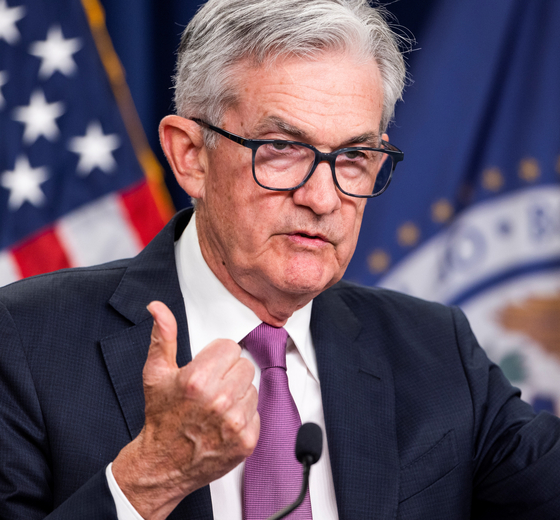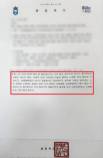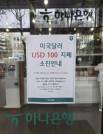국제 경제
파월 연준 의장 “고강도 금리 인상 또 할것” 시사 [연설 전문]
- 잭슨홀 연설, 인플레이션 억제 거듭 강조
“물가 안정은 경제 근간, 고통 감내해야”
“물가 안정 못하면 더 큰 고통 겪을 것”

파월 의장은 금리 인상으로 인한 경기 침체 심화를 우려하는 시장의 목소리를 의식한 듯 “물가 안정은 경제의 근간”이라며 “물가 안정을 위해선 고통을 감내해야 한다”고 강조했다. 그는 이와 함께 “물가 안정 없인 모두에게 이익이 될 수 있는 노동시장 환경을 조성하기 어렵다”며 “물가 안정을 회복하지 못하면 더 큰 고통을 겪게 될 것”이라고 재차 경고했다.
파월 의장이 26일(미국 현지시간) 미국 와이오밍 주 잭슨 홀(Jackson Hole)에서 열린 연례 경제정책 심포지엄에서(일명 ‘잭슨홀 미팅’)에서 연설한 주 요지다. 그는 연설 내내 “인플레이션을 목표치인 2%까지 안정시키기 위해선 고강도 긴축 통화 정책이 필요하다”는 점을 거듭 강조했다.
파월의 연설 시간은 8분 정도였다. 연설 시간이 역대 연준 의장들의 연설 중에서 가장 짧다는 평가를 받았다. 그만큼 파월의 메시지는 단호하고 명료한 핵심만 드러냈다. 파월 의장 역시 연설을 시작하기에 앞서 “오늘 나의 발언은 매우 짧고, 나의 (발언) 초점은 더욱 좁으며, 나의 메시지는 매우 직접적이다”라고 말했다.
파월의 연설 내용에 대해 투자시장에선 9월에 열릴 예정인 공개시장위원회(FOMC) 회의에서 연준이 ‘자이언트 스텝’(기준 금리 0.75% 포인트 인상)을 또 한번 단행할 가능성이 크다는 전망으로 해석했다. 이럴 경우 6월과 7월에 이어 3연속 자이언트 스텝이 된다.
연준은 그동안 경기 침체, 기업 경기 하락 등을 우려하는 시장의 목소리에도 불구하고 인플레이션 억제에 초점을 두고 고강도 금리 인상 정책을 강행해왔다. 그 결과 미국은 기업들의 2분기 매출 호조, 관련 종목 주가 상승, 실업률 감소와 고용시장 안정, 물가 폭등 선방 등의 실적을 챙기며 나름 선전해왔다.
하지만 연준이 만족하기엔 여전히 부족한 상황으로 보인다. 세계 경제를 위협하는 변수들이 더 많아지고 꼬리의 꼬리를 물고 더욱 확대되고 있어 긴장의 끈을 놓을 수 없는 상황이기 때문이다. 전 세계에 퍼진 물가 폭등, 러시아와 우크라이나의 전쟁 장기화, 중국의 경제 성장 둔화, 서방 세계와 중국·러시아 간 신 냉전 심화, 자원 확보 전쟁, 세계공급망 불안 확대 등 여러 악재들이 해소될 기미가 전혀 보이지 않고 세계 경기 침체를 자극하고 있어서다.
이는 파월 의장이 이날 연설에서 “물가 안정을 회복하려면 당분간 통제 정책 기조(restrictive policy stance)를 유지해야 한다”는 말을 거듭 강조한 배경이다. 그는 이와 함께 “인플레이션 안정화는 중앙은행의 책무이며 결의를 갖고 행동해야 할 때”라며 연준의 역할과 의지를 시장에 다시 한번 각인시켰다.
통화 긴축 기조를 드러낸 이날 파월 의장의 연설이 파장을 일으키면서 26일(현지시간) 미국 뉴욕증시는 3대 지수 모두 급락했다. ▶다우존스30산업평균지수는 전장보다 1008.38포인트(3.03%) 추락한 3만2283.40 ▶스탠더드앤드푸어스(S&P)500지수는 141.46포인트(3.37%) 후퇴한 4057.66 ▶나스닥지수는 497.56포인트(3.94%) 폭락한 1만2141.71에 각각 거래를 마쳤다.
☞ 잭슨 홀(Jackson Hole) 미팅=
미국 캔자스시티 연방준비은행이 매년 8월에 여는 경제정책 컨퍼런스로 1978년에 시작됐다. 와이오밍 주 잭슨 홀에서 열리는 행사여서 일명 ‘잭슨 홀 미팅’이라 부른다. 미국 연방준비은행 총재들을 비롯해, 경제학자, 주요 외국의 중앙은행 총재 등 경제 정책 관련 인사들이 참석해 경제 현안에 대해 토론하고 진단하는 자리다.

Monetary Policy and Price Stability
Thank you for the opportunity to speak here today.
At past Jackson Hole conferences, I have discussed broad topics such as the ever-changing structure of the economy and the challenges of conducting monetary policy under high uncertainty. Today, my remarks will be shorter, my focus narrower, and my message more direct.
The Federal Open Market Committee's (FOMC) overarching focus right now is to bring inflation back down to our 2 percent goal. Price stability is the responsibility of the Federal Reserve and serves as the bedrock of our economy. Without price stability, the economy does not work for anyone. In particular, without price stability, we will not achieve a sustained period of strong labor market conditions that benefit all. The burdens of high inflation fall heaviest on those who are least able to bear them.
Restoring price stability will take some time and requires using our tools forcefully to bring demand and supply into better balance. Reducing inflation is likely to require a sustained period of below-trend growth. Moreover, there will very likely be some softening of labor market conditions. While higher interest rates, slower growth, and softer labor market conditions will bring down inflation, they will also bring some pain to households and businesses. These are the unfortunate costs of reducing inflation. But a failure to restore price stability would mean far greater pain.
The U.S. economy is clearly slowing from the historically high growth rates of 2021, which reflected the reopening of the economy following the pandemic recession. While the latest economic data have been mixed, in my view our economy continues to show strong underlying momentum. The labor market is particularly strong, but it is clearly out of balance, with demand for workers substantially exceeding the supply of available workers. Inflation is running well above 2 percent, and high inflation has continued to spread through the economy. While the lower inflation readings for July are welcome, a single month's improvement falls far short of what the Committee will need to see before we are confident that inflation is moving down.
We are moving our policy stance purposefully to a level that will be sufficiently restrictive to return inflation to 2 percent. At our most recent meeting in July, the FOMC raised the target range for the federal funds rate to 2.25 to 2.5 percent, which is in the Summary of Economic Projection's (SEP) range of estimates of where the federal funds rate is projected to settle in the longer run. In current circumstances, with inflation running far above 2 percent and the labor market extremely tight, estimates of longer-run neutral are not a place to stop or pause.
July's increase in the target range was the second 75 basis point increase in as many meetings, and I said then that another unusually large increase could be appropriate at our next meeting. We are now about halfway through the intermeeting period. Our decision at the September meeting will depend on the totality of the incoming data and the evolving outlook. At some point, as the stance of monetary policy tightens further, it likely will become appropriate to slow the pace of increases.
Restoring price stability will likely require maintaining a restrictive policy stance for some time. The historical record cautions strongly against prematurely loosening policy. Committee participants' most recent individual projections from the June SEP showed the median federal funds rate running slightly below 4 percent through the end of 2023. Participants will update their projections at the September meeting.
Our monetary policy deliberations and decisions build on what we have learned about inflation dynamics both from the high and volatile inflation of the 1970s and 1980s, and from the low and stable inflation of the past quarter-century. In particular, we are drawing on three important lessons.
The first lesson is that central banks can and should take responsibility for delivering low and stable inflation. It may seem strange now that central bankers and others once needed convincing on these two fronts, but as former Chairman Ben Bernanke has shown, both propositions were widely questioned during the Great Inflation period.1 Today, we regard these questions as settled. Our responsibility to deliver price stability is unconditional. It is true that the current high inflation is a global phenomenon, and that many economies around the world face inflation as high or higher than seen here in the United States. It is also true, in my view, that the current high inflation in the United States is the product of strong demand and constrained supply, and that the Fed's tools work principally on aggregate demand. None of this diminishes the Federal Reserve's responsibility to carry out our assigned task of achieving price stability. There is clearly a job to do in moderating demand to better align with supply. We are committed to doing that job.
The second lesson is that the public's expectations about future inflation can play an important role in setting the path of inflation over time. Today, by many measures, longer-term inflation expectations appear to remain well anchored. That is broadly true of surveys of households, businesses, and forecasters, and of market-based measures as well. But that is not grounds for complacency, with inflation having run well above our goal for some time.
If the public expects that inflation will remain low and stable over time, then, absent major shocks, it likely will. Unfortunately, the same is true of expectations of high and volatile inflation. During the 1970s, as inflation climbed, the anticipation of high inflation became entrenched in the economic decisionmaking of households and businesses. The more inflation rose, the more people came to expect it to remain high, and they built that belief into wage and pricing decisions. As former Chairman Paul Volcker put it at the height of the Great Inflation in 1979, "Inflation feeds in part on itself, so part of the job of returning to a more stable and more productive economy must be to break the grip of inflationary expectations."
One useful insight into how actual inflation may affect expectations about its future path is based in the concept of "rational inattention." When inflation is persistently high, households and businesses must pay close attention and incorporate inflation into their economic decisions. When inflation is low and stable, they are freer to focus their attention elsewhere. Former Chairman Alan Greenspan put it this way: "For all practical purposes, price stability means that expected changes in the average price level are small enough and gradual enough that they do not materially enter business and household financial decisions.
Of course, inflation has just about everyone's attention right now, which highlights a particular risk today: The longer the current bout of high inflation continues, the greater the chance that expectations of higher inflation will become entrenched.
That brings me to the third lesson, which is that we must keep at it until the job is done. History shows that the employment costs of bringing down inflation are likely to increase with delay, as high inflation becomes more entrenched in wage and price setting. The successful Volcker disinflation in the early 1980s followed multiple failed attempts to lower inflation over the previous 15 years. A lengthy period of very restrictive monetary policy was ultimately needed to stem the high inflation and start the process of getting inflation down to the low and stable levels that were the norm until the spring of last year. Our aim is to avoid that outcome by acting with resolve now.
These lessons are guiding us as we use our tools to bring inflation down. We are taking forceful and rapid steps to moderate demand so that it comes into better alignment with supply, and to keep inflation expectations anchored. We will keep at it until we are confident the job is done.
박정식 기자 tango@edaily.co.kr
ⓒ이코노미스트(https://economist.co.kr) '내일을 위한 경제뉴스 이코노미스트' 무단 전재 및 재배포 금지










![면봉 개수 → 오겜2 참가자 세기.. 최도전, 정직해서 재밌다 [김지혜의 ★튜브]](https://image.isplus.com/data/isp/image/2025/12/21/isp20251221000019.400.0.jpg)
![갓 잡은 갈치를 입속에... 현대판 ‘나는 자연인이다’ 준아 [김지혜의 ★튜브]](https://image.isplus.com/data/isp/image/2025/11/21/isp20251121000010.400.0.jpg)



당신이 좋아할 만한 기사
브랜드 미디어
브랜드 미디어
[임상 업데이트] 샤페론-국전약품, ‘누세린’ 1상 투약 완료
바이오 성공 투자, 1%를 위한 길라잡이팜이데일리
일간스포츠
일간스포츠
이혁재, 사기 혐의 또 피소…빌린 돈 3억원 안 갚은 혐의 [왓IS]
대한민국 스포츠·연예의 살아있는 역사 일간스포츠일간스포츠
일간스포츠
일간스포츠
LG엔솔, 이달만 13.6조 물거품…유럽·ESS 돌파구 '글쎄'(종합)
세상을 올바르게,세상을 따뜻하게이데일리
이데일리
이데일리
[마켓인]韓 상륙한 글로벌 AC들…“사무실 제공부터 해커하우스 운영까지”
성공 투자의 동반자마켓인
마켓인
마켓인
면역항암제 왜 듣지 않았나…지니너스 "지친 T세포 깨우기보다 만들지 말아야 했다"
바이오 성공 투자, 1%를 위한 길라잡이팜이데일리
팜이데일리
팜이데일리